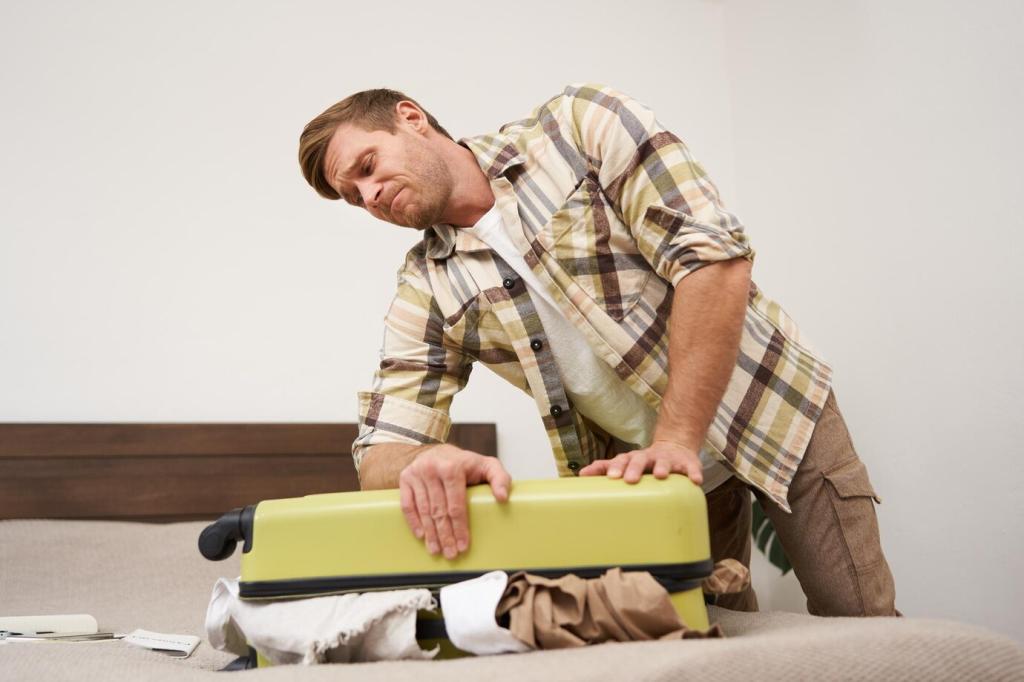Handling Delicate Antique Furniture Pieces with Confidence and Care
Chosen theme: Handling Delicate Antique Furniture Pieces. Step into a world where craftsmanship meets memory. Today we share time-tested techniques, heartfelt stories, and practical guidance to help you lift, clean, move, and preserve fragile antiques without fear. Subscribe for more conservation-savvy tips and share your own experiences to keep this community vibrant.
Know the Materials, Honor the Craft
Many delicate antiques use thin veneers of walnut, mahogany, or satinwood over secondary woods, adhered with animal hide glue. Moisture, heat, and stress distort these layers quickly. I once watched a walnut veneer bubble after a humid basement move—proof that construction details dictate how gently and where we place our hands.
Know the Materials, Honor the Craft
A worn glow often means shellac or French polish, both softened by alcohol and heat. Oxidized oil varnish and wax layers tell stories of the home they lived in. Overzealous cleaning erases value. Always test cautiously—shellac dissolves under alcohol—because one careless swipe can undo two centuries of patient patina.
Know the Materials, Honor the Craft
Mortise-and-tenon, dovetails, and pegged joints are sturdy, but age introduces brittleness. Never lift chairs by arms or crests; hold seat rails and stretchers instead. At an estate sale, a ladder-back snapped when someone tugged an arm to steer it. The lesson endures: let the joinery, not the ornament, carry the load.
Safe Handling and Lifting Techniques
Remove drawers, shelves, and pendulums to reduce shifting mass. Tape doors closed with low-tack painter’s tape over soft padding. Plot the route, clear obstacles, and decide grips in advance. For tall clocks, detach weights and pendulum first. Count together—three, two, one—so every teammate moves in unison and nothing twists unexpectedly.
Safe Handling and Lifting Techniques
Nitrile gloves protect finishes from oils better than cotton, which can snag on carvings. Use padded moving blankets and soft edge protectors where hands must rest. Keep rings and watches off. Maintain broad, stable contact points rather than pinches. Ask for help rather than risking a risky solo lift—your pride can wait.
Safe Handling and Lifting Techniques
Support from rails, aprons, and frames, not mouldings or crest rails. For marble-topped commodes or consoles, lift from beneath the carcass and, if possible, remove the stone entirely. A neighbor once lifted by the marble alone; it sheared at a hidden fissure. Cradling the base would have spared both stone and history.
Gentle Cleaning That Preserves History
Dry First: Dusting Like a Conservator
Use a soft goat-hair brush and a microfiber cloth with a HEPA vacuum’s nozzle nearby, protected by a mesh screen. Brush dust toward the nozzle, not across fragile edges. Support thin veneers with your free hand. It is slow, mindful work that prevents grit from scratching finishes while keeping original character intact.
Spot Tests and Solvent Sense
Begin with deionized water and a pH-neutral soap on a cotton swab, then test mineral spirits or naphtha if needed. Alcohol can dissolve shellac; never assume. Always test in a hidden spot and observe for softening or color lift. Once, a cloudy water ring eased with cautious alcohol vapor—success born from disciplined testing.
Wax Wisely, Avoid Silicone
A thin coat of microcrystalline wax, well buffed with a lint-free cloth, offers gentle sheen and protection. Skip silicone sprays; they penetrate finishes and complicate future conservation. Apply sparingly, following the grain. Share your preferred waxing routine in the comments, and tell us what transformed a tired finish into quiet glow.
Humidity and Temperature Sweet Spot
Keep relative humidity around 45–55% and temperature near 18–22°C (65–72°F), with slow, gentle changes. Use a hygrometer where the piece actually lives. Keep antiques away from vents, radiators, and fireplaces. One winter, a radiator shrank a tabletop overnight, opening a joint line—an entirely avoidable heartbreak with better placement and humidity.
Light, UV, and Fading
Direct sun fades dyes and bleaches wood; UV also embrittles finishes. Use UV-filter film, lined curtains, and rotate displays. Remember shellac softens with heat, making imprints more likely. A leather-inlaid desk I loved developed a ghostly rectangle under a sunny window; a simple shade would have saved its deep, chocolate tone.
Pests and Prevention
Watch for powdery frass from wood-boring insects and tiny exit holes in hidden areas. Quarantine new acquisitions, use sticky traps, and keep storage clean and dry. Avoid mothballs that leave persistent odors. Integrated pest management is gentle but effective—your vigilance and housekeeping habits matter as much as any chemical fix.

Packing and Moving Without Heartbreak
Remove loose shelves, keys, mirrors, marble tops, pendulums, and weights. Bag and label hardware, then tape the bag to an interior surface. Pad handles and locks before securing doors with soft ties. Photograph the setup. These simple steps keep stress off fragile parts and make reassembly painless on the other end.
Light Repairs and Knowing Your Limits
Hot hide glue remains the gold standard for antique wood because it is reversible and compatible with original adhesives. Use gentle clamping with padded cauls and avoid over-tightening that crushes fibers. A humble Windsor arm stabilized beautifully this way—no foam, no screws, just patient alignment and a warm glue pot.
Light Repairs and Knowing Your Limits
Inject warm hide glue with a syringe beneath lifted veneer, then protect the area with waxed paper and clamp lightly using soft blocks. A warm iron through kraft paper can ease re-adhesion, but test carefully. Skip cyanoacrylate and construction adhesives; they lock in mistakes that future conservators cannot safely reverse.
Join our mailing list
